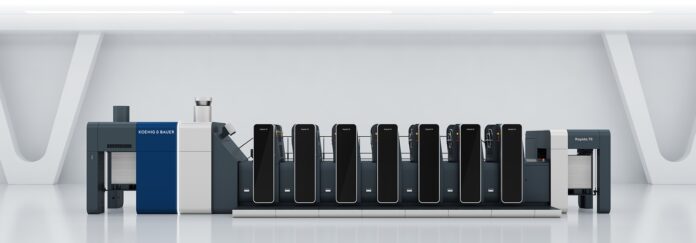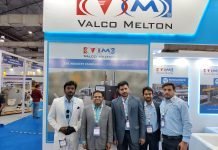
More than a dozen multicolor sheetfed offset presses landed at Indian ports in March 2025. A few of these were 7-color presses with coaters that could only begin installation in April. In addition to the machines that arrived in the last week of March, half a dozen machines arrived in April and are currently under installation. In addition, some of the machines that were supposed to come in April are delayed and likely to be installed in the June to August time frame – while other presses in the pipeline are scheduled for installation in the following months.
The lead times from all five global manufacturers are now in the range of six months, and their Indian sales teams and representatives say that any multicolor offset order in the second half of FY 25-26 can only be shipped and installed in the following financial year. Moreover, all the press manufacturers have increased or announced increases in prices. These are justified by a range of reasons including increased raw material, energy, and supply chain costs.
Nevertheless, despite price competition amongst packaging converters, the South Asian packaging economy remains buoyant with leading Indian companies expanding capacity and establishing new locations. Middle-order and newer players also continue to order more than a single press at one go.
Indian converters seem to be undeterred by the Trump tariffs and in some cases may even benefit from electronic products shifting production from China to India. It is possible that the current financial year with its strong start of installations in the first two months from sales in the previous year, will be a record year for packaging press installations.
There is every indication that about thirty-five to forty brand new multicolor offset carton presses (meaning mostly 7-color plus coater machines with interdeck UV curing systems in addition to end-of-press IR curing), will be ordered and that anywhere from 30 to 35 will be installed by 31 March 2026. Alongside these presses, at least 60 autoplaten die-cutters will be imported including some that are again very highly specified for special applications. There will also be a good number of machines for the production of litho-laminated cartons and folder gluers, including some with high specs.
The backlog coming into this year includes some very highly configured machines. This trend is likely to accelerate in the current year’s orders with double coaters and other high-value add-ons – many of which are nearly signed and in the pipeline. Unlike last year, this year all the five global manufacturers of sheetfed offset presses are likely to sell and install new packaging presses into the country. Komori will lead with a substantial number of presses, with K&B likely to be a clear second but with some very highly specified machines, followed by Heidelberg, RMGT, and ManRoland Sheetfed.
Despite the uncertainty of US tariffs and the price increases by the global sheetfed manufacturers, the lead times are significant for all of them. Logistics are also adding time for machines shipped from Europe to Asia. It is said that most of the Indian orders placed in H2 of the financial year (from October 2025 onward) will only be delivered in the next financial year. Apparently, this is the case for the German and Japanese manufacturers.
It seems that many more of the monocarton and litho-laminated carton converters are maturing in their understanding of the need for automation features and also of the competitive need to perform more of the value-added special applications in a single pass. Leading converters also see the need to replace their earlier 6 and 7-color coater presses with faster and more productive machines.
Although the packaging converters often complain of raw material cost volatility and hypercompetion, they are experiencing the demand for very high-quality cartons from all brand owners, big and small. Even newer brand owners in FMCG segments such as food, personal care, and cosmetics benchmark their shelf impact and packaging quality with the segment leaders. This requirement for value-added metallic and haptic effects and the increase in shorter runs and SKUs are driving the market for more automated, efficient, and reliable packaging presses.











